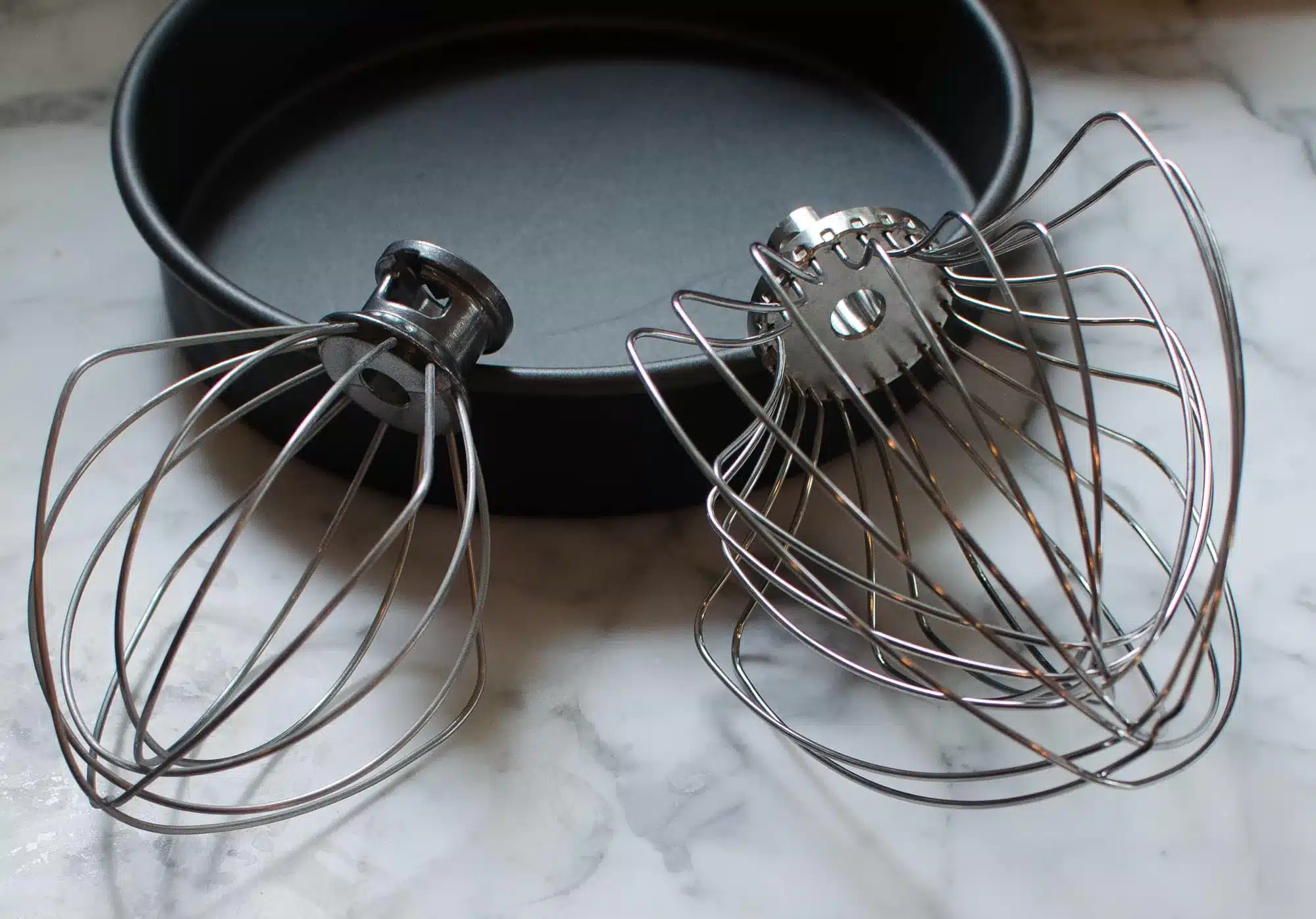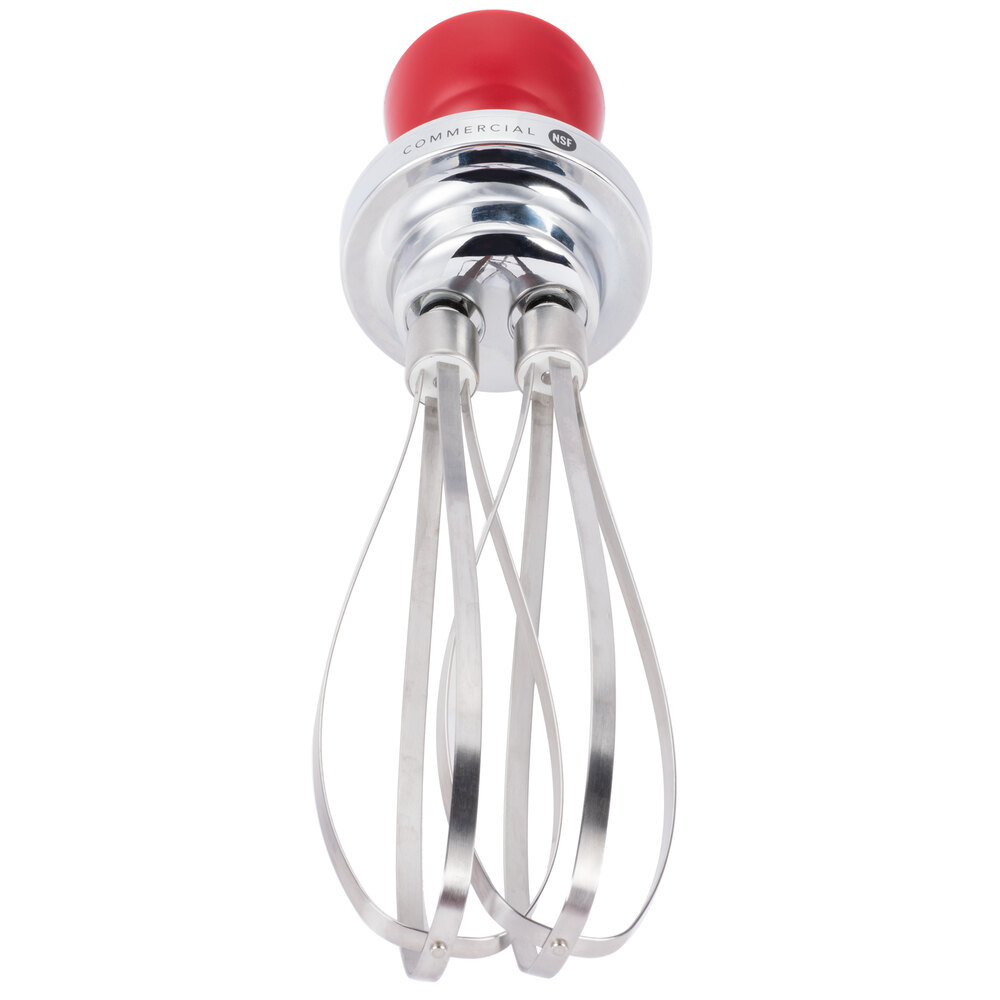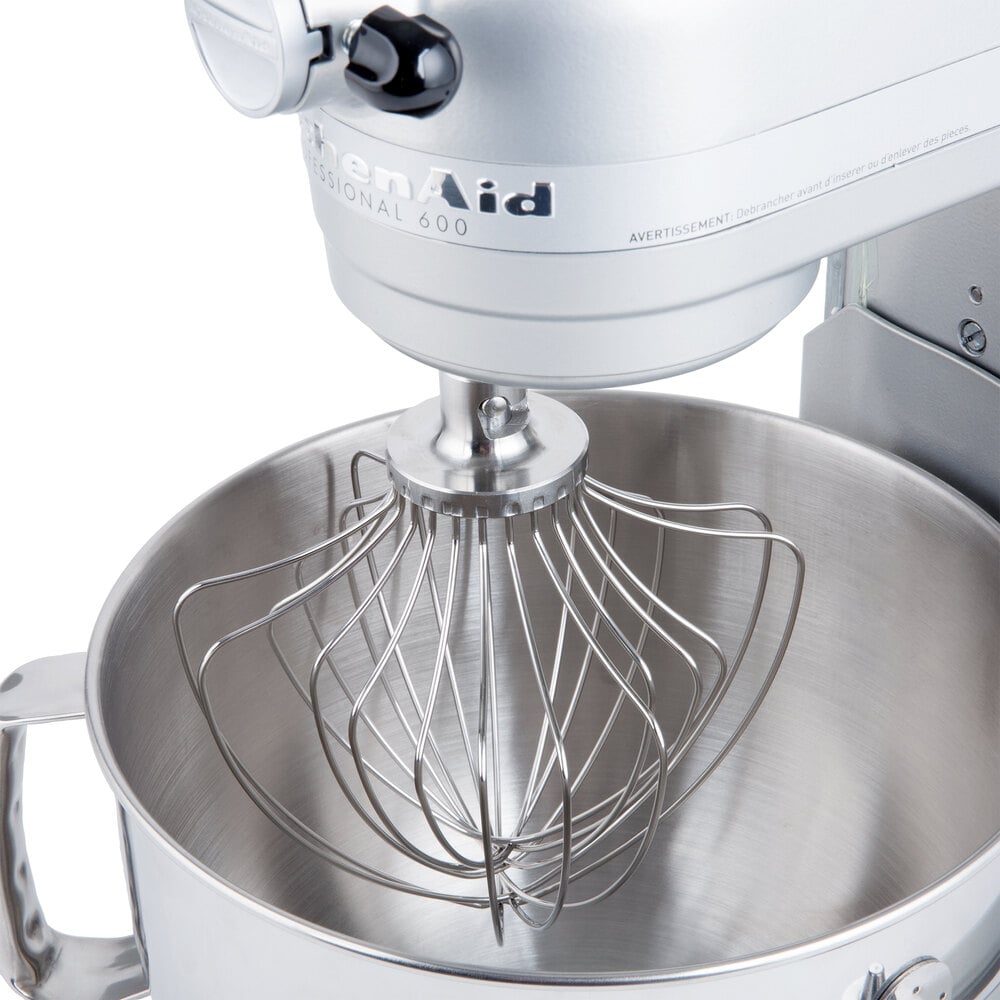
The whisk attachment, often referred to as the wire whip, is one of the three standard attachments that usually come with KitchenAid mixers. The others are a flat beater and a dough hook. The whisk is made of thin metal wires arranged in a balloon shape, and it’s primarily used for incorporating air into mixtures.

The whisk attachment shines in tasks that require introducing a significant amount of air into a mixture. Here are some of its common uses:
The whisk is perfect for whipping cream. It incorporates air into the cream, transforming it from a heavy liquid into a light, fluffy substance suitable for topping desserts or making ganache.
Making meringues, soufflés, or any recipe that requires stiff or soft peaks from egg whites is where the whisk attachment comes in handy. It efficiently beats the egg whites, introducing the necessary air to achieve the desired consistency.
Frostings and icings require a light and fluffy texture, which can be achieved using the whisk attachment. It’s especially useful when making buttercream frosting, where air needs to be incorporated for a creamy and smooth consistency.
While the flat beater can also handle this task, the whisk attachment can introduce more air into the mixture, resulting in lighter, more delicate cakes or pastries.

For optimal results when using the whisk attachment, keep these tips in mind:
The wire whisk is dishwasher safe in most KitchenAid mixer models. However, to prolong its lifespan and prevent damage, it’s advisable to hand wash it using warm, soapy water. Dry it thoroughly before storing to avoid rusting.
1. Can I use the whisk attachment for dough or batter?
The whisk attachment is not designed for heavy mixtures like dough or thick batter. Using it for such tasks might bend the wires or damage the attachment. Instead, use the dough hook or flat beater for these tasks.
2. Why does my whisk attachment leave grey residue?
Some whisk attachments are made of aluminium, which can react with certain foods and leave a grey residue. If this happens, clean the attachment thoroughly, and consider using the white-coated whisk attachment, which is designed to prevent this issue.
3. Are there different sizes of whisk attachments?
Yes, KitchenAid offers whisk attachments in different sizes to match their range of mixers. Make sure to choose the one that fits your specific KitchenAid model.
The whisk attachment for the KitchenAid mixer is a versatile tool that can significantly enhance your baking and cooking experience. Understanding its uses, along with tips for optimal results and maintenance, can help you make the most of this useful attachment.
Meta Description: Dive into the comprehensive guide on the whisk attachment for KitchenAid mixers. Learn about its uses, tips for optimal results, maintenance, and get answers to frequently asked questions.
